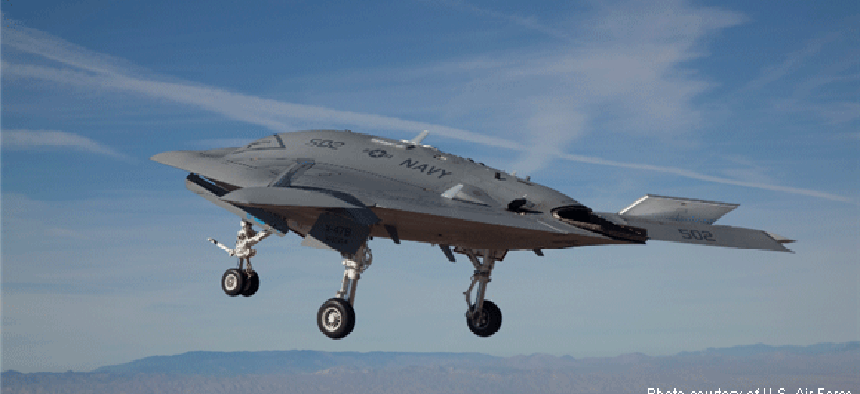Is Navy's new drone the first real military robot?


Connecting state and local government leaders
The X-47B stealth drone, designed to fly missions on its own, represents something of a breakthrough in robotic technology.
Robotics is one of the fastest growing and most innovative fields in government's use of technology. From NASA's X1 robot that is helping people to walk, to the Marine's AlphaDog that is ready to climb mountains loaded down with gear, to the Wave Gliders that are helping NOAA combat climate change in the Arctic Ocean, robots are literally everywhere.
But all of the robots so far require some form of human interaction for anything beyond basic functions. That could be changing with the Navy's new X-47B stealth drone, which will be able to takeoff and land from an aircraft carrier, fly a mission and report back to operators without needing a human to watch over the whole process, and without a human pilot, according to a report in the Daily Mail.
Robots, particularly military ones, have started to show signs of intelligence. The 501 Packbot, for example, can find its way back to its controller if the radio connection is broken. But those are baby steps, and it appears that the X-47 is nearly fully grown. It's undergoing sea trials over the next several months aboard the USS Harry Truman, the Navy says.
The ultimate goal of the project is to have an operator be able to use something as simple as drop-down menus and a point-and-click interface to assign the X-47 a mission. Then the aircraft can launch itself, perform the mission, and return to base, which could be an aircraft carrier. The person who assigns the mission does not need to be a pilot, and doesn't have to monitor the plane at all once the mission is given, though current procedure calls for a human to oversee all operations.
The X-47 instead relies on a set of senses developed by Northrop Grumman to help it navigate the skies. It has accelerometers, altimeters, gyroscopes and, of course, a Global Positioning System receiver. It's also got a brain of sorts to help it make decisions in the field.
As robots go, the X-47 is quite large, at 62-feet long. It weighs 14,000 pounds when empty and sits 10 feet high. It is designed in a stealth, no-tail pattern, with special materials so that it can avoid radar as it travels. It can also carry up to 2,000 pounds of ordnance to protect itself in the air or to kill targets on the ground.
One would think that building such an intelligent robot, capable of feats such as carrier landings and making decisions during missions would be tough, but NextGov reports that Navy didn't run into any real challenges in the development of the aircraft. The X-47's brain is managed by 3.5 million lines of code, and existing technology makes up its senses.
The use of autonomous drones will likely raise concerns that they could go awry, possibly attacking something other than military targets. The Pentagon requires that all weapons other than those designed for use in cyberspace need be built to rigorous standards and have human oversight to avoid that from happening. And the Navy stresses that the X-47 is not carrying any weapons, though it is outfitted to be able to do so.
But from a technology standpoint, the more significant factor here is that the X-47 is almost a true robot, which is generally defined as a machine capable of carrying out a complex series of actions automatically. That means that the X-47 is probably the first real robot in military service, or at least it comes the closest to the futuristic type of robots popular in sci-fi movies.
That said, a lot is riding on the X-47 program. If it's successful, then count on it being the first in a long list of thinking machines, whereas failure could set the program back significantly. It is rare that we can identify a turning point while it's actually happening, but the X-47 going into service is a moment whose importance can't be overstated. Everything after it will make the world a different place.




